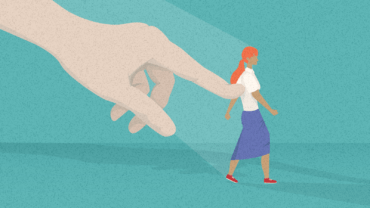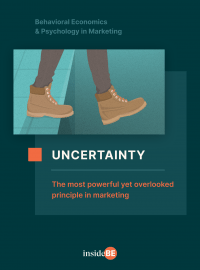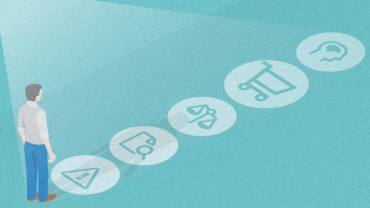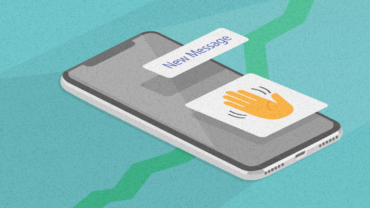3 Steps to Improve Customer Experience Using Psychology

Are you trying to delight your customers to increase loyalty and retention but getting poor results? Research shows you’re focusing on the wrong thing. This article explores how to use psychology and the key points you need to remember to improve CX
In this article, you’ll discover:
- Why delighting your customer should not be the focus of your CX;
- A 3 step-checklist for designing CX; and
- How to use psychology and behavioral economics in CX.
Imagine this: You check into a luxurious beachside resort for the weekend to celebrate your birthday. On arrival, the front desk upgrades your suite and there’s a decadent chocolate truffle cake waiting for you in your room. What an amazing start! You have a wonderful time. But during checkout, while paying the bill, you notice a number of charges you were unaware of. You speak with the front desk about them, but the process to reverse these charges is quite complex and takes so much time that you almost miss your flight, leaving you feeling frustrated.
Do you think the resort’s efforts in trying to delight you will be successful in winning you over as a loyal customer? Or will the unpleasant end to your trip overshadow everything that went before and lead you to choose another property for your next stay?

Discover ground-breaking ideas and fascinating solutions.
You guessed it right.
Even though they were successful at delighting you, you ended up having a bad customer experience.
At the end of the stay, you were dissatisfied with their service, and for that reason you would probably choose another property in the future.
Don’t try to delight your customers
How many times have you googled good CX and come across some amazing examples of how companies have gone above and beyond to delight their customers? Quite a few, for sure.
But is this really what good CX is about? More importantly, does delighting your customers guarantee satisfaction and loyalty? Definitely not.
Research shows that trying to delight customers by exceeding their expectations versus simply meeting their expectations only makes them marginally more loyal.
Research shows that trying to delight customers by exceeding their expectations versus simply meeting their expectations only makes them marginally more loyal.
Often, companies spend a lot of time, money, and resources in trying to delight their customers, wrongly assuming that this is the key to customer loyalty and retention. In reality, it’s just an expensive tactic that simply does not provide the kind of results you would expect.
So, what should you do?
Customer service is not about building loyalty but about mitigating disloyalty.
That means you first need to understand and address all the negatives that can make your customers dissatisfied. Only then can you start thinking about creating positive experiences.
Three steps to designing your CX
So, let’s get down to business and explore how you should go about designing your customer experience in a systematic way:
1. Understand and remove the negatives
Remove all the negative aspects of the experience that could give a customer reason to leave your company.
The negative elements in the customer experience are often not objective, but purely psychological.
Let’s look at this with a case study.
At one Houston Airport, passengers were complaining frequently about the long wait-time for baggage claim. To resolve this issue, the airport operators hired more baggage handlers, which reduced the waiting time to eight minutes. This was less than the waiting time at other airports, but the complaints still didn’t stop.
After analyzing the whole customer journey carefully, they discovered that passengers only spent one minute walking to the baggage claim area, but then spent seven minutes waiting to collect their bags.
The customers were dissatisfied because they spent a major chunk of their time just standing around idly waiting. To tackle this, the operators switched the arrival gate. The walk to baggage claim now took six minutes and people only had to wait two minutes to get their bags. Boom! Just like that, the complaints dropped to near zero.
This tells us that customer experience is not as objective as we might believe. The same experience can be interpreted differently based on the context. And that shows how important it is to understand the underlying psychology and address the true pain points.
Let’s now take a look at some of the psychology principles that can be applied to remove negatives:
Ambiguity Aversion
You’ve been put on hold while talking to a customer service executive and are patiently waiting for them to come back. 20 minutes go by, so you decide to hang up and call later. But wait, would you have disconnected if you had known you only needed to wait for 1 more minute?
Knowledge is power, and rightly so. No one likes uncertainty. It doesn’t give us the feeling of being in control, which is an important factor when making decisions.
For example, research suggests that people tend to avoid medical treatments when the associated risks are less known.
So it’s important for you to remove the guesswork at every point in your customer experience to make the process seamless.
There’s a good reason why Uber is so popular. It’s because they have brilliantly removed uncertainty from their customer experience, resulting in it becoming the default choice whenever you need to book a cab.
Choice & Information Overload
CPU speed, RAM, graphics, screen size, battery life, storage, brand… Have you ever wanted to buy a laptop and had so much information thrown at you that you just kept delaying making a decision? Don’t worry, we’ve all been there.
The trick is to give them just enough information and options, so that they feel safe and certain about buying your product.
Giving customers too many options to choose from and too much information to filter through can lead to an inevitable delay in making a choice, and possibly even cause drop-out if they feel too overwhelmed. It can also make them feel uncertain about the choice they finally make. The trick is to give them just enough information and options, so that they feel safe and certain about buying your product.
For example, deciding what TV show or movie you want to watch after a long day at work can often lead to confusion. So many options, so little time. Read how Netflix tackles the problem of Choice Overload quite cleverly by making this choice easy.
Perceived Effort
It doesn’t matter how great your product is if the customer doesn’t even reach the point of engaging with it. If they feel the process of engaging with your brand or product requires too much time and effort on their end, then you’ve already lost that customer. It’s crucial to explicitly communicate the ease and simplicity of the behavior you want them to exhibit.
Here’s an article which explores in depth how to lower perceived effort for the customer.
2. Build in positives in a systematic way
This is NOT about delighting your customers. It is about building experiences in such a way that they leverage consumer psychology insights to systematically create better experiences. For example:
Peak-End Rule
People don’t judge entire experiences, but their memories of those experiences. Memories are biased, they’re not created by recalling and averaging every moment of the experience. Rather, they’re heavily dictated by how we felt at emotionally intense moments (peaks) and how the experience ended. The peak and end moments of the customer experience thus need to be strong and positive, since they are a major influence on how the customer remembers and perceives it.
Let’s go back to the resort again. The experience ended on a low, with you getting frustrated by the long process of reversing charges during billing. Even though you spent a delightful weekend at the resort, just half an hour of bad CX was enough to change your perception about the entire experience and disproportionately impact how you will recall it in the future. All because it occurred at the end. This translates to a poor customer experience and does not help with customer loyalty. And that’s why it’s crucial for companies to first focus on removing any negatives from the customer journey and then slowly build in positive experiences.
Expectations shape experiences.
We all know that experiences shape expectations, but the opposite is true as well. Our expectations shape our experiences. Once we form an expectation or belief, we filter and look for information that supports it.
If you expect an experience to be positive, you’re more likely to experience it that way. If you expect it to be negative, the same experience will appear worse. This becomes very important when designing the customer journey.
3. Try to delight
Once you’ve removed all the negative points in the customer experience and have systematically built positive experiences, you can then start thinking of ways in which you can delight the customers. Just make sure you don’t skip the first two steps.
Key Takeaways:
- Don’t try to delight your customers. Research shows it’s a very expensive strategy that has almost no impact on customer loyalty.
- First and foremost, understand and remove all the negatives from the CX. The role of customer service is not to build loyalty but mitigate disloyalty.
- Make sure you remove all uncertainties, reduce the perceived effort and remove information overload.
- Focus on the ending and the most emotionally intense moments. The peak-end rule determines how we remember experiences






